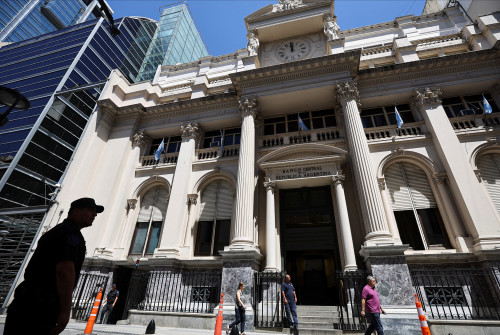WASHINGTON (Reuters) -U.S. wholesale inventories were unchanged in May after declining for two straight months, suggesting inventory investment could support economic growth in the second quarter.
The Commerce Department said on Monday that wholesale inventories were unchanged instead of dipping 0.1% as previously reported last month. Stocks at wholesalers fell 0.3% in April.
Economists polled by Reuters had expected that inventories would be unrevised. Inventories are a key part of gross domestic product. They increased 3.7% on a year-on-year basis in May.
Private inventory investment rose at its slowest pace in 1-1/2 years in the first quarter, helping to restrict GDP growth to a 2.0% annualized pace in that three-month period.
The careful inventory management amid expectations of weaker demand because of higher borrowing costs is weighing on production at factories.
The Federal Reserve has raised its policy raise by 500 basis points since March 2022, when it embarked on its fastest monetary policy tightening campaign in more than 40 years.
The U.S. central bank is expected to resume hiking rates this month after skipping in June.
Wholesale motor vehicle inventories increased 1.1% in May after rising 0.3% in April. But inventories of furniture continued to decline as did stocks of lumber, paper, apparel, farm products and petroleum.
Excluding autos, wholesale inventories slipped 0.1% in May. This component goes into the calculation of GDP.
Economists at Goldman Sachs raised their second-quarter GDP growth estimate to a 2.3% rate from a 2.2% pace.
Sales at wholesalers fell 0.2% after being unchanged in April. There were increases in sales of long-lasting manufactured goods like autos, furniture, machinery and professional equipment.
At May’s sales pace it would take wholesalers 1.41 months to clear shelves, rising further above the 2019 average of 1.35 months and up from 1.40 in April.
(Reporting by Lucia Mutikani; Editing by Andrea Ricci)





